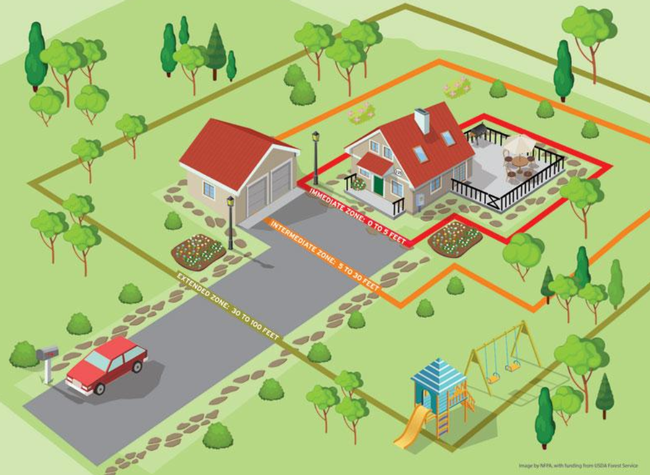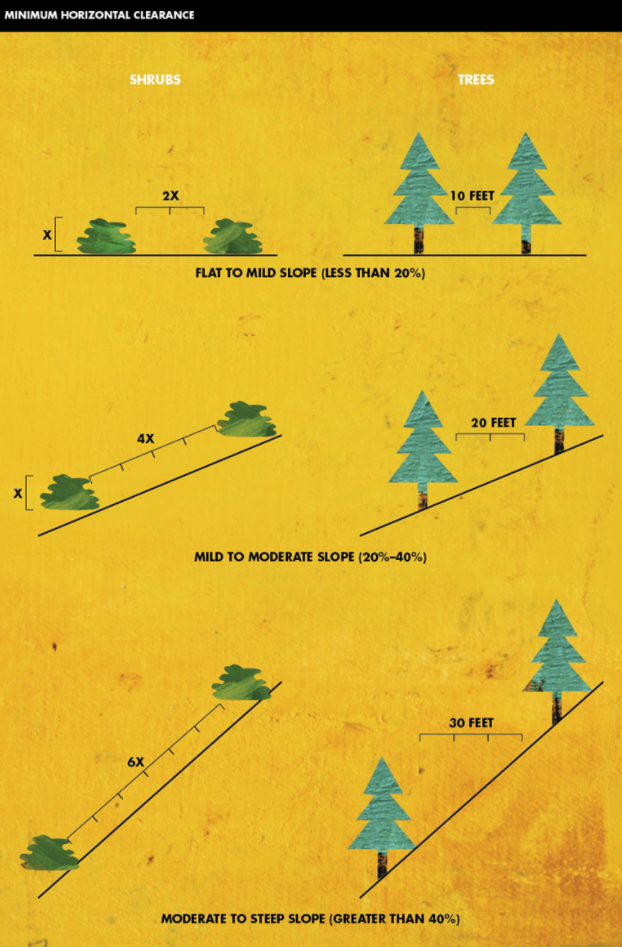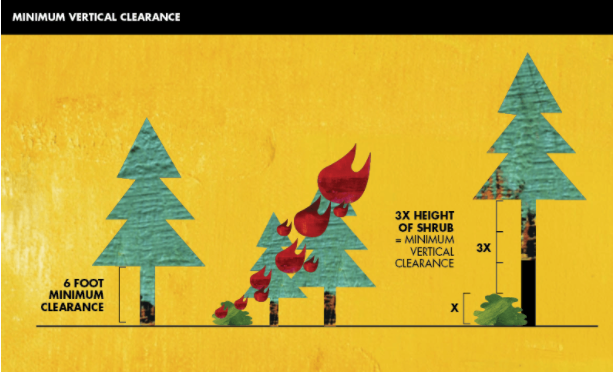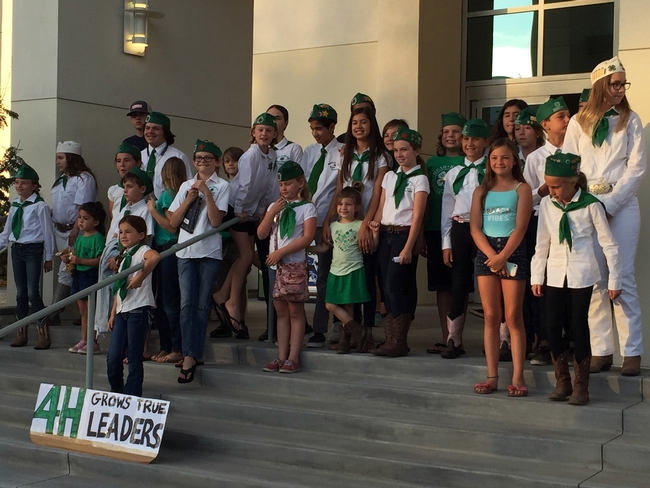
Posts Tagged: riverside county
'Trees for Tomorrow Start Today' Workshop (via Zoom) March 9, 2021 (8:15 AM - 3:00 PM)
Landscape trees provide shade, cool urban heat islands, reduce interior energy use and related costs, provide habitat for pollinators and wildlife, and beautify our communities. They also help clean our environment by absorbing carbon dioxide emitted by vehicles and other producers of fossil fuels.
Taking care of our urban trees is an important way to maximize these benefits. Unfortunately, their average lifespan in our cities is less than 1/4 of their potential due to poor selection and care. You can help enact change and increase the health, longevity and canopy coverage of our urban forests by encouraging your city leaders, local non-profit organizations interested in ‘green cities' arborists, landscape architects, nursery growers, HOAs, and concerned citizens to register for our free ‘Trees for Tomorrow Start Today' workshop (via Zoom) on Tuesday, March 9, 2021 (8:15am – 3pm).
Please reach out to your city leaders and local ‘green industry' professionals to encourage their attendance and participation. While the workshop is free, registration is required through this secure link: http://ucanr.edu/u.cfm?id=264
A bevy of speakers including certified arborists, horticulturists, planners, water district personnel and other non-profit and green industry representatives will discuss the benefits of urban trees; recommended practices for their selection and care; how to avoid hazardous trees that damage property and structures; and share success stories resulting from partnerships through cities, non-profit organizations, the green industry, HOAs, and street tree committees.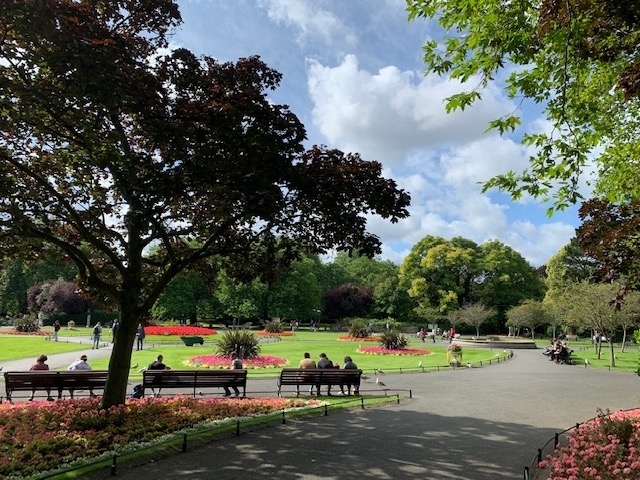
A highlight of the workshop will be the opportunity for attendees to participate in breakout sessions that cut across professions and interest groups (city planners, community service directors, arborists, landscape architects, landscapers, water district managers, HOA managers, golf course superintendents, nursery growers, UC master gardeners, concerned citizens, etc.) to enact positive change regarding tree selection and care.
Thank you for sharing this opportunity to help ensure a healthy future for our children's children with your city leaders and decision-makers.
In the meantime, here are some tree care tips to ‘start the conversation' between now and the workshop:
• Select trees that perform well in your climate. The Sunset Western Climate Zone maps are more precise than USDA zones for our warmer climates. Trees should also be selected based on their adaptation to the ‘micro-climate' in each particular landscape, as well (shade, proximity to buildings, space needs below as well as above ground, soil type, water source, etc.)
• Plant trees the same depth they were in their container in holes at least 2-1/2 times wider. Do not add compost or organic matter to the hole. This practice can result in circled roots that never grow laterally out of the confines of the dug hole.
• Remove any tree ties that are cutting into the trunk or branches of your trees. If trees must be staked due to windy conditions, make sure that the ties are loose enough to allow trees to gently flex in the wind. This helps trees develop the necessary lower trunk strength and stability to support the tree as it matures. Over time, you may be able to completely remove the ties and stakes once the lower trunk becomes stronger and self-supporting.
• Keep all plants and mulch several inches away from tree trunks.
• Keep tree trunks dry. They should not come into contact with water from sprinklers or hoses.
• Regularly water newly planted trees but water mature trees infrequently and deeply. Watering too often reduces the level of oxygen in the rootzone and can lead to waterlogged soils prone to crown and root rots. During fall, trees require only about 15% of the water they require in the summer.
• Prune trees only as needed and avoid topping them. Invest in the services of a credentialed and knowledgeable professional to correctly care for your valued trees. Find a list of International Society of Arboriculture Certified Arborists in your area here: https://www.treesaregood.org/findanarborist.
Tips for Enhancing the Fire-Resistance of Your Home Landscape
Welcome to another “New Normal!” Due to climate change resulting in hotter, drier conditions and reduced snowpack, the occurrence of a “fire season” which traditionally occurred from May through October is becoming a misnomer, with fire occurring throughout the year. The severity of what may lie ahead over the next several months was highlighted in a recent tweet posted by CAL FIRE: “Compared to last year, California has seen over 2,650 more fires and a nearly 2000% increase in the acres burned year-to-date (January 1 – September 7), across all jurisdictions.”
Indeed, Fall often hosts strong offshore winds that can quickly spread destructive fires, exacerbated by the impacts of climate change. What can you do to help ensure ‘defensible space' that increases the safety of your family, pets and property in fire-prone areas? First and foremost, select and properly maintain fire-resistant plants augmented with hardscapes and fire breaks extending from your home to at least one hundred feet outward. (This also helps ensure access to your home by firefighters and other first-line responders in the event of a fire or other life-threatening event.)
Vegetation chosen for your defensible space should have low flammability and can include trees and shrubs along with herbaceous plants. Allowing adequate space between woody plants is important to avoid a continuous fuel path (fuel ladder) where fire starting at ground level can climb to the top of a tree and spread from tree to tree.
1. Follow these ‘defensible space' guidelines to reduce the risk of fire spread and damage:
Zone 0 (first 5 feet from structures): avoid anything combustible including woody plants, mulch, woodpiles, trellises, and stacked items. Instead, add walkways and mulch and other hardscaping made from pebbles and rocks, pavers, rock mulch, or pea gravel. Include a 6-inch noncombustible area extending from the ground to the exterior siding of structures.
Zone 1 (5-30 feet from structures): Eliminate fire spread by ensuring adequate space between trees, removing lower branches. Consider adding irrigated groundcovers or mowed grass or hardscapes between these plant groupings, as well. Properly maintain plants and remove dead portions of plants.
Zone 2 (31-100+ feet from structure to the property line): Concentrate on reducing the density of plants to slow the spread of fire and to reduce the height of flames. Woody plants should be spaced (as illustrated below) to prevent fuel ladders.
Defensible Zones (source: National Fire Protection Association, nfpa.org)
2. Remember that even a so called “fire-resistant” species that is under-watered or otherwise poorly cared for can be highly combustible. The conditions under which the plant is grown influences its fire-resistance more than the species itself. However, plant species high in wax, oil, and resins such as conifers tend to be highly flammable while manzanita and ceanothus (California lilac) are less so.
3. Avoid planting or spreading invasive species. While invasive plants are never recommended in any landscape, they are especially problematic in natural areas prone to wildfire. Once established they can fuel fire as well as crowd out native vegetation and associated habitat. Refer to the California Invasive Plant Council website for more information and specific examples and plants to avoid (www.cal-ipc.org).
4. Follow recommended planting and pruning guidelines to prevent both horizontal and vertical spread from tree to tree. Horizontal spacing is directly related to the slope of the land and the height of the vegetation.
Photo above (courtesy of CAL FIRE) is a diagram to help you determine minimum horizontal clearance for tree and shrub placement to reduce fire risk.
Photo above (courtesy of CAL FIRE) shows a 5' shrub near a tree. In this example, 15' of clearance (3 x 5') is needed between the top of the shrub and the lowest tree branch to prevent a fire ladder.
5. While fire-resistant natives and adapted non-natives greatly reduce your chance of losing your home and property to wildfire, all plants will burn under favorable conditions. Ensure that plants receive adequate irrigation.
6. Rather than applying organic mulch near your home, use non-flammable materials such as stone and pebbles. Granite pathways are also suggested since they provide a fuel break. Firewood and propane tanks should also be kept away from your home.
References:
CAL FIRE “Ready for Wildfire”: https://www.readyforwildfire.org/prepare-for-wildfire/get-ready/defensible-space/
Drill, S. et al. (2009), S.A.F.E Landscapes: Southern California Guidebook, UC Cooperative Extension: https://ucanr.edu/sites/SAFELandscapes/files/93415.pdf
UC ANR “Preparing Home Landscaping for Fire”: https://ucanr.edu/sites/fire/Prepare/Landscaping/
Riverside supervisors vote to restore UCCE funding
After more than 100 4-H members, UC Master Gardeners and others attended a Riverside Board of Supervisors' meeting in support of UC Cooperative Extension June 10, the panel voted 5-0 to restore UCCE's funding, reported Jeff Horseman and Matt Kristoffersen in the Riverside Press Enterprise.
The vote reversed an earlier decision to cut UCCE funding as part of a larger plan to deal with reduced county tax receipts. If the funding had not been restored, services including 4-H, nutrition education and agricultural programs would have been effected, said Eta Takele, UCCE director in Riverside County.
UC Cooperative Extension, a key part of UC Agriculture and Natural Resources, serves all California counties. Academic advisors work with farmers to implement more-efficient growing methods, solve pest management problems and develop smart water-use strategies. Natural resources advisors conduct wildfire education and research natural resources conservation. Nutrition educators promote nutritious eating habits and exercise for better health. California 4-H Youth Development Program engages youth to become leaders. Thousands of volunteers extend UCCE's through the Master Gardener, Master Food Preserver, California Naturalist, and the California 4-H Youth Development Programs.
During the June 10 meeting, the supervisors heard from Riverside 4-H members who have been aided by their involvement in the program.
4-H member Bethany Campbell told the supervisors 4-H helped her overcome shyness and gain confidence.
“4-H helped me rise above fear and insecurity to become a leader," Campbell said.
A Blythe 4-H member, Samantha Teater, 17, said, 4-H "definitely saved me from getting into trouble."
UC ANR associate vice president Wendy Powers attended the supervisors' meeting.
"Those who offered public comment provided heartfelt testimony about the impact of our programs and how they, personally, have benefited and how the county has benefited," Powers wrote in her blog. "The work's not over. We need to continue to engage those who don't know us but make decisions that impact us. We need to continue to engage those who do know us, and brainstorm how to do better – reach more people, have a greater impact."
The article said Riverside County officials would work with UC Cooperative Extension to save money by moving its offices from leased office space to county-owned space.
Email a trained University of California Cooperative Extension Master Gardener Volunteer for Help With Your Plant Problems
Unlock the Door to One of the Best Kept Secrets in Southern California!
Did you know that University of California Cooperative Extension has trained Master Gardener volunteers ready to answer your home gardening and landscaping questions throughout the greater Los Angeles area?
Email the Master Gardener helpline in the county in which you reside for the most accurate information since climates and conditions vary across the southland:
Los Angeles County: Email: mglosangeleshelpline@ucdavis.edu
San Bernardino County: Email: mgsanbern@ucanr.edu
Riverside County: Email: anrmgriverside@ucanr.edu
Orange County: Email: ucceocmghotline@ucanr.edu
Visit http://mg.ucanr.edu for links to other Master Gardener helplines in over 50 California counties!
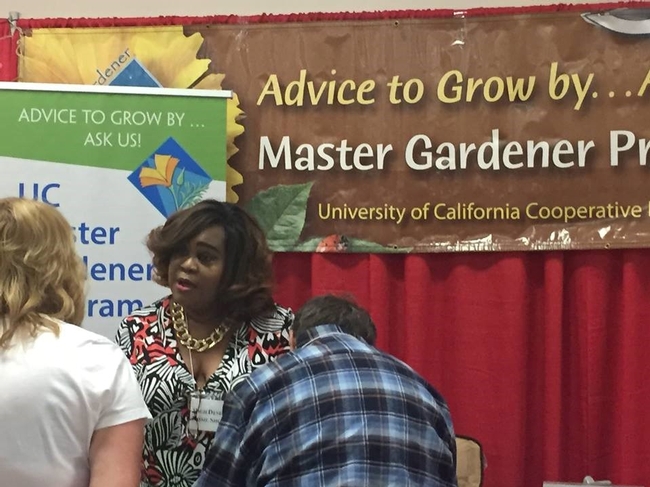
audrey henry mg

